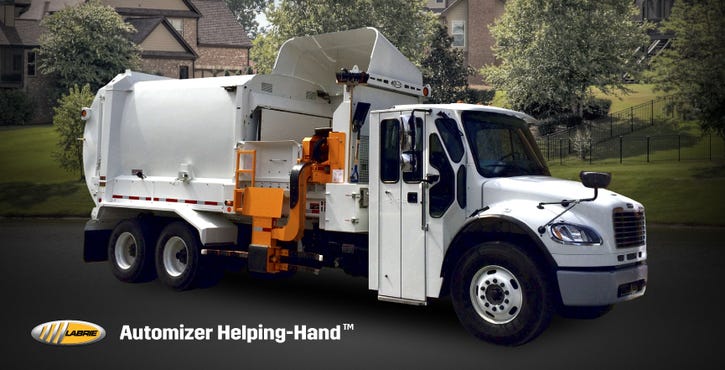Women Leaders in Waste: Diana Grootonk of Labrie Enviroquip
Hiring and retaining quality employees and identifying the right market opportunities for the business are always top of mind for Grootonk.

When Myers Power Products Inc. acquired Labrie Enviroquip Group in January 2012, Diana Grootonk had not planned on taking on the role of chief executive officer (CEO) for Labrie, which manufactures waste collection vehicles for the North American market. But through a series of unplanned events, she ended up embracing that role.
“Ultimately, I stepped into the role on an interim basis but fell in love in the process,” explains Grootonk. “So, here I am, still very much enjoying the challenge of growing the business. I am fortunate to be surrounded by a team of exemplary managers, directors, employees and customers who make running this business as much fun as it is challenging.”
Grootonk began working for Myers Power Products in 1994 and previously served as the company’s chief operating officer before taking on the role of president and CEO. Labrie was originally purchased by one of Myers’ holding groups, for which Grootonk also serves as CEO and president.
Myers acquired Labrie in 2012 when Grootonk and her partners, who specialize in turnaround and bankruptcy deals, were indirectly led to the manufacturing of rolling stock, starting with intermodal chassis. They then went on to contract the manufacturing of refuse collection vehicles for a small U.S. producer, which ultimately led to the Labrie deal.

Grootonk has been in manufacturing for most of her career, and she says the biggest challenges she has faced throughout her career remain the same regardless of the industry. Workforce availability, hiring and retaining quality employees and identifying the right market opportunities for the business are always at the forefront of her mind.
“I have previously worked in the manufacturing of children’s toys, traffic signals and low-voltage distribution equipment and currently in medium-voltage switchgear and garbage trucks,” she points out. “Regardless of the country or the product, these challenges (while morphing from year to year) always remain at the top of the ‘challenges list.’”
“On a more personal note, I think every CEO is challenged with finding the right balance for him or herself in the industry in which they participate—what works in one industry or geography may not work in another—and finding that balance may not always be easy or obvious,” adds Grootonk.
Labrie Enviroquip has had a presence in the refuse market for more than 100 years now and offers three platforms: the Labrie platform, which is the traditional mixed city known for recycling and automated equipment. The front loader, which was originally a Western Canadian and West Coast front loader that has now evolved into a national product. And the Leach Rear Loader, which has been around for more than a century.
Labrie
As one of the largest and most recognizable manufacturers of refuse and recycling collection vehicles in North America, the company employs 850-plus employees and maintains manufacturing facilities in the U.S., Canada and Mexico with parts and service locations in Osh Kosh, Wis.; Lafayette, Ga.; and Quebec, Canada.
In the seven years that Grootonk has been in waste and recycling, she has seen the industry evolve in every way imaginable—from the expansion of automated collection, to the movement to renewable natural gas, electric vehicles and weighing systems, to the data collection that helps haulers and municipalities maximize their fleet operations.

In recent years, refuse fleets have been looking to advancements in technology and telematics solutions to optimize routing and improve safety. Data from telematics coming off the trucks can help fleet managers identify risky driving behaviors within their commercial drivers. At Labrie, automation has been driven in large part by the economic sense that it makes, plus the undeniable safety factor.
“It’s a very exciting time for the industry,” says Grootonk. “Everyone is looking for greater safety, longer vehicle life, maximized TCO [total cost of ownership] and more automation. From driver/collector safety to granular data collection, we will continue to see more and more technology infused into every aspect of collection, including vehicles. Electric chassis is around the corner, and this will move the refuse collection vehicle industry in a different direction. As we continue to see improvements in battery technology, this will become more of a reality than ever in the near future.”
When it comes down to it, the ever-evolving industry keeps Grootonk on her toes and motivated every day. “I have the unique opportunity to learn something new every single day in a most amazing industry,” she says.
As we continue this series, we invite our readers to email Waste360 Editorial Director Mallory Szczepanski at [email protected] with suggestions of women to feature in the coming months.
About the Author
You May Also Like




.png?width=300&auto=webp&quality=80&disable=upscale)